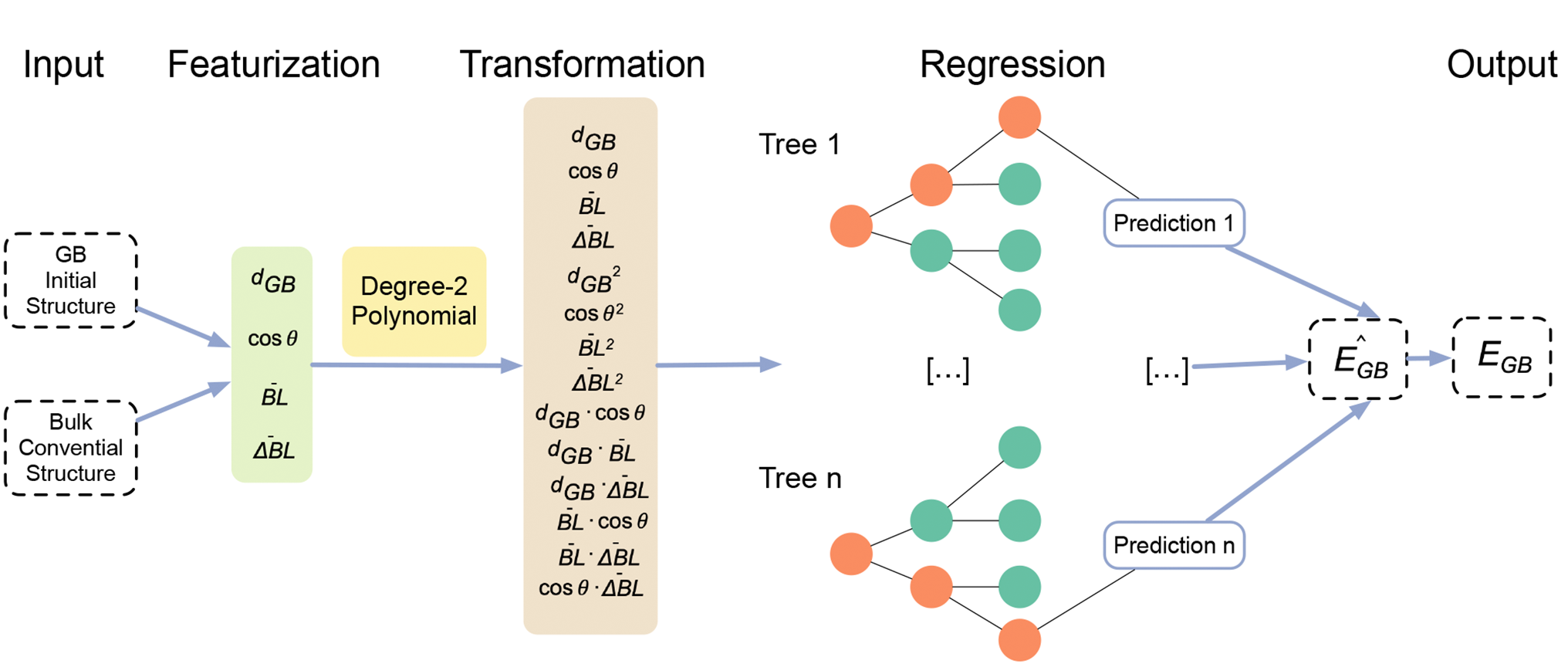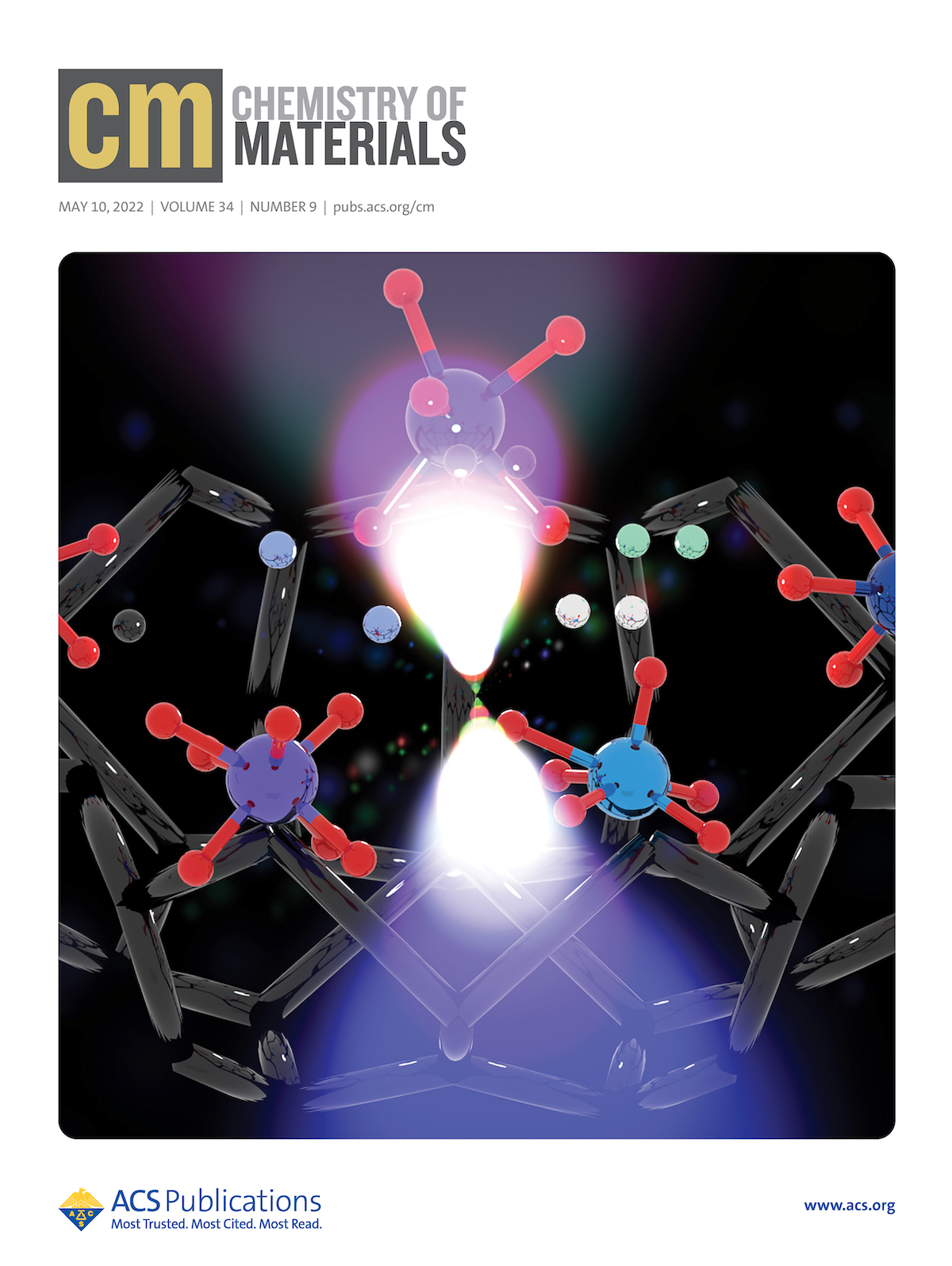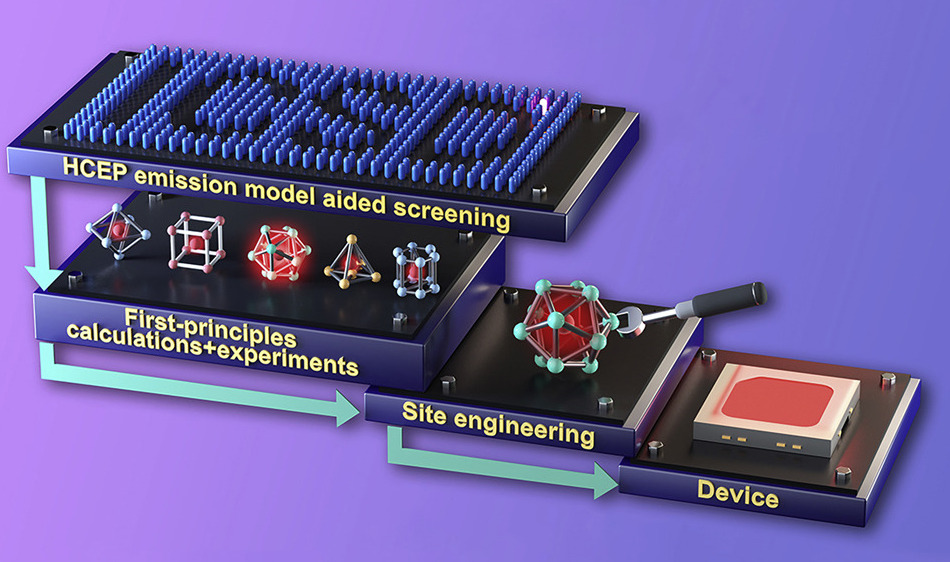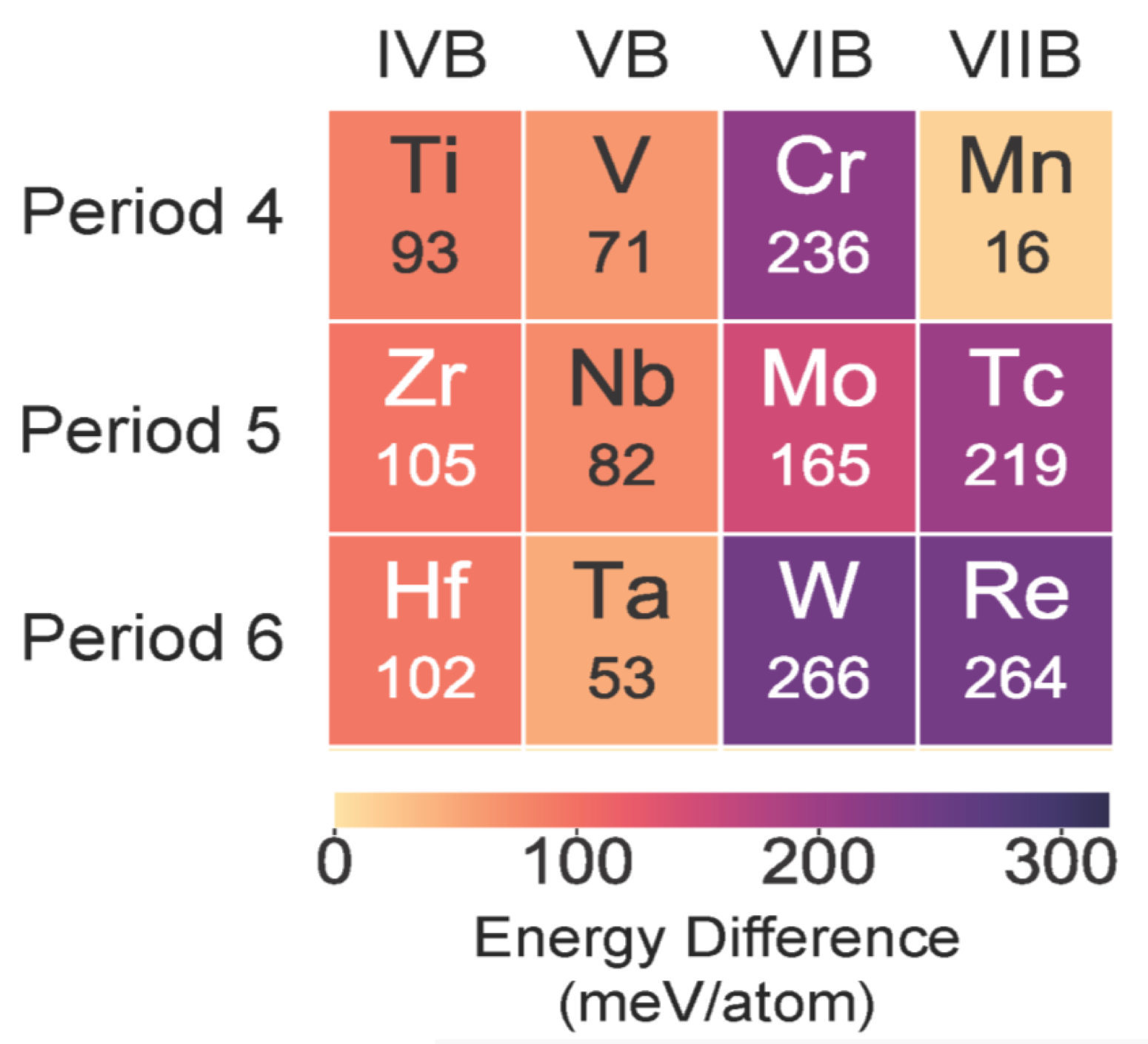Universal ML model for GB energies
Weike’s swansong project in our group on “A Universal Machine Learning Model for Elemental Grain Boundary Energies” has just been published in Scripta Materialia! The grain boundary (GB) energy has a profound influence on the grain growth and properties of polycrystalline metals. Here, we show that the energy of a GB, normalized by the bulk cohesive energy, can be described purely by four geometric features to within a mean absolute error of 0.13 Jm-2 . More importantly, this universal GB energy model can be extrapolated to the energies of high Σ GBs without loss in accuracy. These results highlight the importance of capturing fundamental scaling physics and domain knowledge in the design of interpretable, extrapolatable machine learning models for materials science. Check out this work here.




